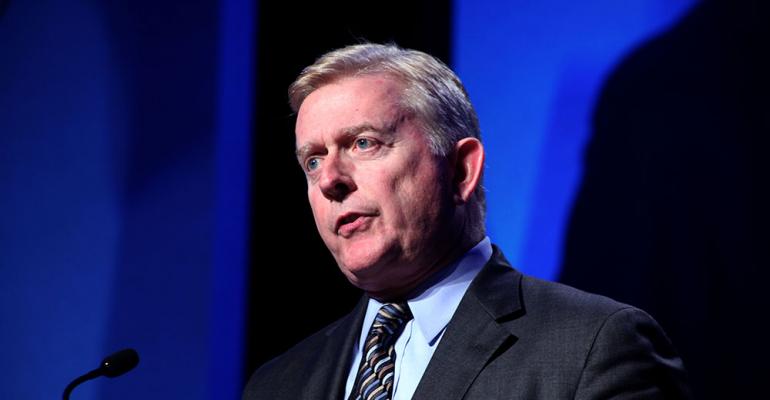TRAVERSE CITY, MI – The trend toward autonomous driving is increasing development costs for components such as longer copper wiring harnesses and faster computers that will lead to consolidation in the industry and more revenue for the survivors, says Jeff Owens, executive vice president and chief technology officer at Delphi.
And electrification, which could reach 10% to 15% of the vehicle market in 2025, says Owens, could add $800 of value in sturdier wires and connectors to handle the higher voltage.
At an investor event in Boston on July 8, Owens said electrification will boost Delphi’s content per vehicle by $500 to $2,000, depending on what components it will supply.
“Even before the smartphone, there were distractions in the car like eating, grooming and talking to passengers,” Owens says. Delphi is developing technology to monitor drivers and the traffic situation to make decisions so “even if the driver is distracted, the car isn’t.”
To meet the demands of more software in cars, Delphi opened a research center in Mountain View, CA, last year where it can work more easily and partner with electronics experts in Silicon Valley.
Demand for more infotainment and better fuel efficiency are driving the growth of high-tech features in cars. Owens says in 10 years there will be 50% more cars; accidents and emissions will be cut in half; and there will be 10 times more computing power in cars.
Delphi predicts industry consolidation in the areas of software integration and active-safety systems.
“Active safety will be a $14 billion segment at the end of the decade,” says Owens. The company believes it is in a small group of major competitors for active safety along with Autoliv, TRW, Bosch and Continental, with smaller competitors having some products.
The individual systems to automate driving functions could lead to “an eventual transformation, perhaps, into fully automated driving,” he says. “You are going to see widespread usage of active safety. As for automated driving, we will get to parking maybe. But for the full-use case with no driver, I am doubtful.
“Fully autonomous driving will be complex to solve at the vehicle level” and beyond, he says. It will be costly and, Owens asks, “Will consumers pay the cost of extracting the driver from the driver seat?”
Closer in time than autonomous driving are the contributions Delphi will make to powertrains. Gasoline direct injection, turbocharging and variable-valve technology carry midrange cost increases but can deliver sizable fuel-economy gains.
At the July 8 presentation, Owens said GDI would increase Delphi’s sales $500 million in 2016 compared with 2013, and VVT would add $200 million. He said diesel growth would add $600 million and electrification $400 million.
A future powertrain program still in the Delphi laboratory is homogeneous-charge compression ignition, which Owens says could improve fuel economy 30% while keeping emissions to the level of a conventional gasoline engine.




